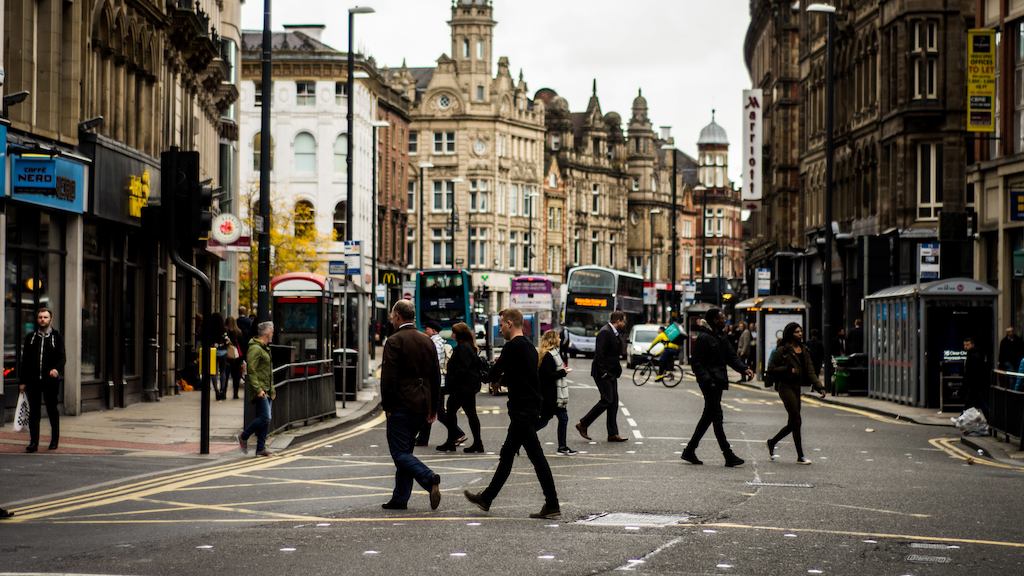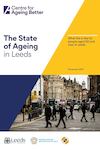How we created 'The State of Ageing in Leeds'

Based on our experiences on creating 'The State of Ageing in Leeds', this is an example of the concrete steps that you can take with the principles of a data-led approach, informed by this approach.
1. Establish a core working group
Producing a State of Ageing report isn’t a quick process, and it needs commitment and coordination to steer the project from start to finish. Even publishing the report won’t really be the final finish line – there will then be the ongoing work of getting the report out into the hands of the people that you want to be using it (this is one of the reasons why, as you’ll see, the engagement principle of the process is so key!).
The core working group should be quite small to maintain focus and to ensure that you have a couple of people who are really engaged and committed to driving it forward. In Leeds, this group consisted of: the project lead, based in the council’s Public Health Older People’s Team; the head of the Public Health Older People’s Team; and the Monitoring and Evaluation Lead at Leeds Older People’s Forum. Together, this group had the necessary set of skills, knowledge and access to resources to guide different stages of the process. You should be looking for a group of people who, together:
- Understand ageing
- Understand ageing in your area
- Understand where local and national data is and how it can be used
2. Identify your ageing domains
You need to start by narrowing down what aspects of ageing you are interested, what feels relevant and important to ageing and quality of life in your area. Leeds’ Age Friendly Action Plan covers the following areas: housing; public and civic spaces; travel and road safety; active and included and respected; healthy and independent ageing; and employment and learning.
The State of Ageing in Leeds was structured around these areas. In your area you may have a plan with similar or different priorities, but linking your data to already existing plans is often a good way to get heard. If there is no plan like this then thinking through with wider stakeholders about what would be important to include can be helpful.
3. Identify your local data to map onto domains
The core working group got support from Council’s intelligence and policy team which manages the Leeds Observatory, a repository of key data about Leeds. We worked together to figure out what they had access to that was relevant to the different areas of the Action Plan and drew up a long list in a spreadsheet.
This was an exploratory process, digging around, asking questions of the data like the ones the guide sets out in the section ‘Understanding and selecting indicators’. While some of the data came from nationally produced data sources – which either reported on Leeds specifically or, when this wasn’t available, the UK as a whole to identify expected trends – a lot also came from different parts of the council and services commissioned by the council. This meant that the process of identifying data needed to be collaborative, working with colleagues across the Council to find out what data was being collected and where.
4. Conduct an initial analysis of your data
Working through the data to get an initial sense of what it told us about ageing in Leeds under each domain
5. Run your first feedback session
We ran a remote workshop via Zoom with a range of stakeholders, including councillors, heads of department and senior officers who lead on ageing in their respective departments across Leeds City Council, Leeds Older People’s Forum and the West Yorkshire Combined Authority. At the workshop we presented the initial data analysis and asked attendees for suggestions of further data or grey literature (non-academic research, like research published by think tanks or a local authority) that they knew of in Leeds.
This workshop was important for identifying gaps in what had been collected and possible additional data sources, and also for engaging stakeholders beyond the core working group to build the network of contacts working around ageing in Leeds. Convening or strengthening this network is a key product of producing a State of Ageing report, and it will also help you further down the road when you are ready to disseminate your findings and call others to action.
6. Refine your data and identify key messages
On the basis of the stakeholder workshop you should now refine the key data, adding in new sources that have emerged and removing those felt to be less useful, - and your key messages. In Leeds this was an important process as it allowed us to reflect and avoid just compiling a vast mass of data.
We needed to begin with a broad search to identify useful data sources that might not have been the most obvious, but once you have finished this you should look back and reflect on the data as a whole. Think about your audience: who is this aimed at, what are you trying to get them to understand and how do you want them to respond to the information?
7. Run a second round of feedback
At this stage, we tested the key data and messaging both internally and externally. Internally we tested it with a public health consultant to check the robustness and interpretation of the data, and with ambassadors from the Leeds Older People’s Forum to test the messaging.
Externally, we took it back to stakeholders who had attended the earlier workshop and the leads in Leeds City Council for the different areas of the Age Friendly Action Plan.
Although it is resource intensive, this engagement really helped us to refine our analysis and our messages, to produce a report that really spoke to the concerns and issues in Leeds. Producing a State of Ageing in your local area is ultimately a process through which you learn about ageing around you, so it is vital that this learning is done with and through the expertise of your stakeholders.
8. Produce your final report
How you organise a report obviously depends on its content and its purpose. We organised the State of Ageing Leeds around the areas of Leeds’ Age-Friendly Action Plan. If you were developing one around the eight domains of ageing well, you could structure your report around a chapter on each. Here was our contents page.
Each section covered:
- How the area related to, and was reflected in, existing policies and strategies in Leeds
- Different components of the area (for example, the different aspects that are relevant for thinking about ageing and ‘Public and civic spaces’)
- The data was presented in the form of colour-coded maps, text, graphs and charts, and text and analysis to help explain the data clearly and its implications for Leeds’ residents.
The report concluded with an ask informed by thinking through what do we want people who read this report to do with what they learn? This can be a helpful way to guide people to think about how they can usefully use this learning in their own work and how they can push forward the agenda for ageing well in their area.
Your process for writing up the report will also depend on your resources. It might be that one person is responsible for writing it all up, but it is good to have your core working group all provide feedback to ensure that interpretations and analysis are rigorous and that the messaging is clear.
9. Disseminate your report
The State of Ageing in Leeds was intended as a tool for individuals and organisations across Leeds to spark conversation about what the priorities for change should be to make Leeds the Best City to Grow Old In. The opportunities for using your report to shape local policy will vary by place, but in Leeds we have used it to feed into:
- The refresh of the Leeds Age-Friendly Action Plan
- The development of city-wide strategies, including the city’s new housing strategy
- A community consultation with older people in Leeds to further develop the understanding of what this data means in people’s lives, and how older residents understand their own priorities
- Consultation on Leeds’ Better City Ambition
- Improving the understanding of older residents’ needs to inform Equality Impact Assessments within the City Council’s transport department and the Equality, Diversity and Inclusion working group at a hospital trust in their inequalities planning
- Prompted other parts of local and regional government to further delve into data, included in the report, that is relevant to their own delivery
- A webinar for third sector organisations on using the report to support funding bids
Good data is only as useful as what you do with it! We hope that the process of producing a State of Ageing report will help more local areas to develop their understanding and build momentum to drive collective action across their local authority to ensure that people are able to age well in their communities.
Developing a local ‘State of Ageing’ report
Read more